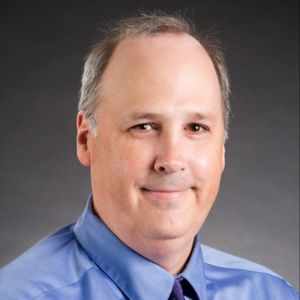St. Jude Family of Websites
Explore our cutting edge research, world-class patient care, career opportunities and more.
St. Jude Children's Research Hospital Home

- Fundraising
St. Jude Family of Websites
Explore our cutting edge research, world-class patient care, career opportunities and more.
St. Jude Children's Research Hospital Home

- Fundraising
St. Jude School Program uses technology to connect teachers to students amid a pandemic
A paper plate, toothpicks, gumdrops, tape, a paper pig, a paper wolf—the packets contained everything needed to build a house of sticks, if not straw or brick, for three little pigs.
“First, read the story, color the pig and wolf, use the tape to attach the pig to the paper plate and the wolf to the top of a hairdryer. Then use the gumballs to connect the toothpicks and build a sturdy structure.”
This was the assignment accepted by K–6 students attending the School Program at St. Jude Children’s Research Hospital not so long ago.
In early April, St. Jude teachers began using distance-learning technology to educate students. The school closed in accordance with physical distancing recommendations from the federal Centers for Disease Control and Prevention to prevent the spread of the coronavirus.
Could this technology—with its split-screen, where the teacher’s whiteboard and the student’s workbook display on-screen simultaneously—engage students and spur wonder?
The Big, Bad Wolf
Seven-year-old Caden O'Daniel built his own house of sticks as protection from being eaten by the Big Bad Wolf.
Caden came to St. Jude in December 2019 for treatment of a fast-growing tumor called pineoblastoma located in the pineal gland, a small organ near the center of the brain.
He read “The Three Little Pigs” as part of a STEM assignment. The story was the spoonful of sugar that makes science, technology, engineering and math appeal to a young child. Caden explored questions designed to teach critical thinking: What does wind do to a house? Could a boost in the wolf’s huff-and-puff strength from the hairdryer destroy the structure? What could be done to strengthen the house?
The moment of truth.
“Caden (pretending to be the wolf) said, ‘I'll huff and I'll puff and I'll blow your house down,’ and then he turned on the blow dryer ... it was adorable,” recalled Sue Lynn, a teacher in the School Program, who came to St. Jude after working for 17 years as a public school teacher.
According to Lynn, many students like remote learning.
"You know what, Ms. Lynn? I think I like this better than the classroom," one student said while lounging in bed, wearing pajamas and clutching a soda.
"They're in their super comfort zone," Lynn said.
The superheroes
The consummate educator, Lynn accepts the universal appeal of creature comforts. Still, she intends to make time spent in remote work worthwhile.
"We'll roll a few math problems," she said, describing her use of dice to teach math skills. She also reads with students to build their comprehension skills.
“We try to make school a normal thing," Lynn added.
Teachers work closely with a child’s home school district and medical team to address academic challenges related to treatment.
“Our goal is to meet the children where they are," said Randy Thompson, the School Program’s new principal. Driving his gray Chevy Tahoe, Thompson finds time to deliver packets of educational materials for use in distance-learning sessions to family housing facilities. He calls this part of his day his "Amazon stint." But he’s quick to deflect attention.
"Our teachers are true superheroes," Thompson said.
Lindsey Smith, one of two English as a second language teachers, possesses her own set of superpowers. Fluent in Spanish, she works with K–12 students in the ESL program.
Among many responsibilities, she teaches students with little or no English proficiency, many of whom cannot tell you their name or communicate with their medical team. Students who develop conversational English skills can participate in their own treatment. They can learn to say hello, recite their medical record numbers, provide birthdates and engage to some degree in crucial conversations.
Smith often sees progress in a few short months.
“To hear these students interact with doctors and nurses, there's nothing like it,” she said. “It's amazing.”
It’s more than school
Lynn said it's physically awkward to do some things with distance-learning technology, such as point to a particular math problem, use a highlighter to circle an item, hold a piece of paper to the camera in just the right spot to see the work.
But she sees the positive side, too.
In the emotional realm, she said that this technology allows her to stay emotionally connected to kids, and it allows moms, dads and other family members to disconnect for a brief time, which is really important during the pandemic, where part of the stress stems from "uninterrupted togetherness," Lynn said.
“It's an emotional break,” she added.
Smith recalled that one Spanish-speaking mother, weary from physical distancing, said, "We appreciate you so much because we're not leaving our apartment. You know, we don't have anywhere to go."
Thompson said the social and emotional check-in is an important part of their approach.
On engagement and wonder
The School Program teachers will continue to work with their students through the summer.
According to Thompson, 52 students attended distance-learning sessions from March 30 through June 30, with 32% of those students enrolled in the ESL program. During that period, teachers led 450 learning sessions.
"Our K–6 students are using it at a greater rate than our high school students," Thompson said, noting that most high school students are involved in online courses with community schools.
So, does this technology engage students, spur wonder?
"I miss not sitting next to children while I teach," Lynn said.
Nevertheless, she said distance learning instruction can be effective.
Sometimes experiments yield unexpected results. Foundations made of paper plates get swept away in the wind. Maybe wonder, curiosity, surprise can be delivered in a gray Chevy Tahoe and though pixels on a screen.






